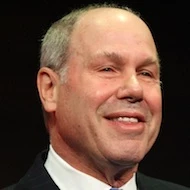
25 Facts You Probably Didn’t Know About Topps Trading Cards

Our month of ‘Everything But The Game’ continues with a look at the Iconic franchise that is Topps Baseball Cards.
Long before our childish bubble was burst and we figured out that baseball cards were nothing more than a commodity that could be bought and sold at card shows, there was a junior collector in all of us. We used to spend all of our weekly allowance on packs of cards and a can of soda at the local convenience store or pharmacy. We experienced the anticipation of opening the wax paper pack, praying there would be something of value within the fifteen cards. The dried up gum in the back of the pack was usually cracked into pieces, and there was always a fair share of useless Stan Javier or Calvin Shiraldi cards that we had no idea what to do with. It was actually a lot of fun.
Here is a nostalgic look back at Topps trading cards knowledge that should make you yearn for those simpler days.

























More From KLUB Tejano 106.9

![The Strangest Beer Ad You’ll Ever See [VIDEO]](http://townsquare.media/site/177/files/2012/01/hqdefault8.jpg?w=980&q=75)
![Grandpa’s Totally Inappropriate Video Will [NSFW language]](http://townsquare.media/site/177/files/2012/01/hqdefault7.jpg?w=980&q=75)
![Vote for Babe of the Week – Natalin, Leah, Ashlee, Carla, Niki, Queen Jelli [PICTURES]](http://townsquare.media/site/177/files/2012/01/babe-of-the-week-2012-01-16.jpg?w=980&q=75)


![Which NFL Team Has the Craziest Sports Fans? [PICTURES]](http://townsquare.media/site/177/files/2012/01/nfl-crazy-football-fans.jpg?w=980&q=75)
![This Monkey Has No Idea How To Treat a Lady [PICTURE]](http://townsquare.media/site/177/files/2012/01/monkey-looking-at-boobies.jpg?w=980&q=75)


